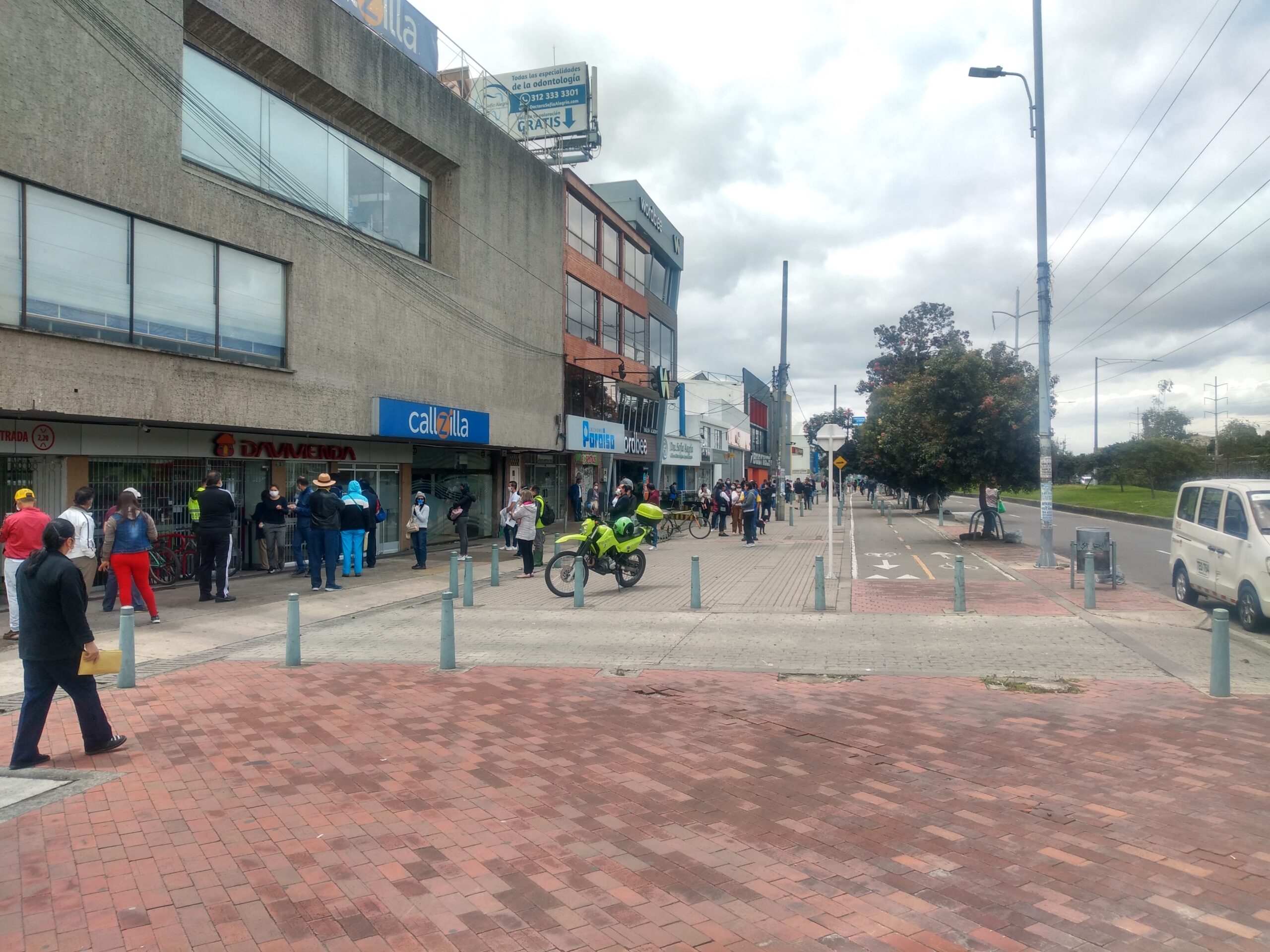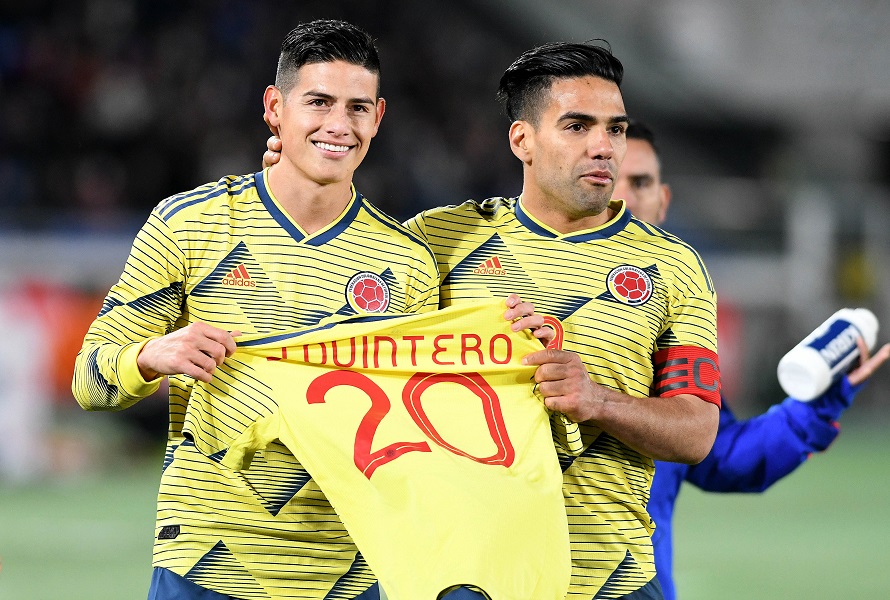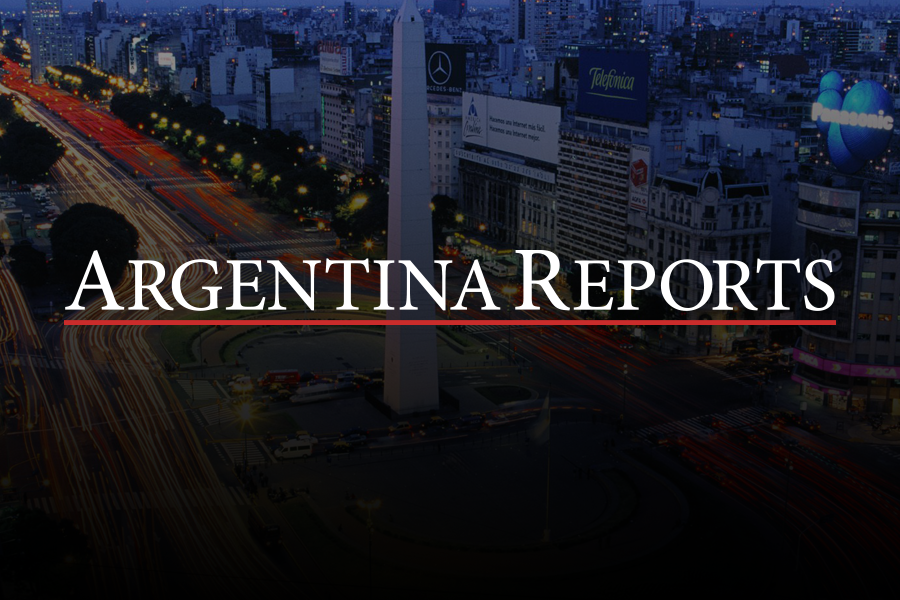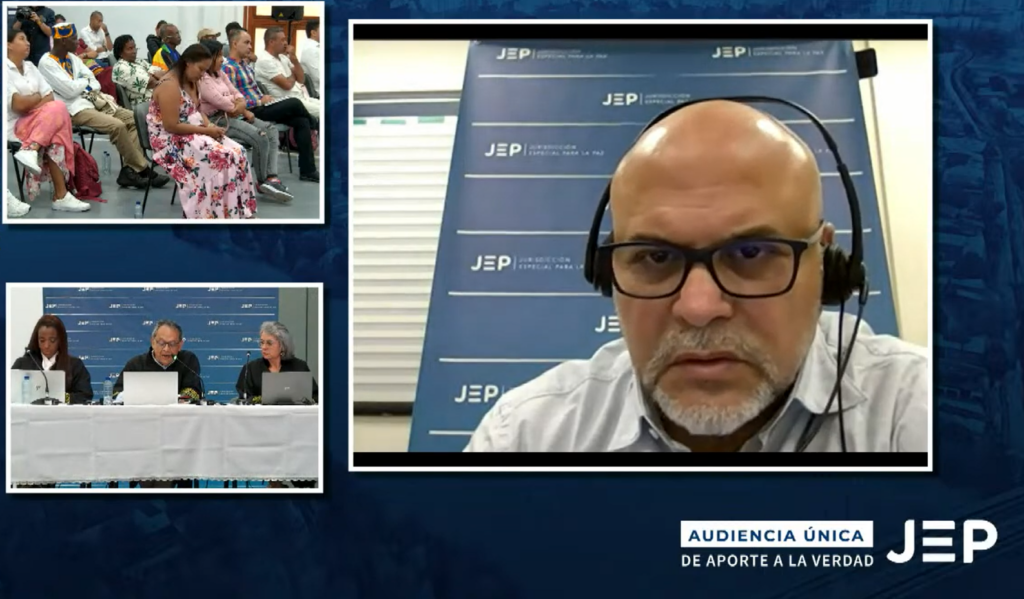
Colombia’s peace courts heard testimony this week from feared paramilitary leader Salvatore Mancuso.
“You’ve been invited to the finca for Sunday lunch,” a friend told me in Montería, a small sweltering city at the heart of Colombia’s coastal cattle country.
It’s a common enough invitation in a region where many middle-class people have a small farm with cattle, chicken, plantain and yams.
But this invitation came with a catch. This was Salvatore Mancuso’s farm, the military chief of the Autodefensas Unidas de Colombia, or AUC, as they wrote their initials, frequently in blood painted on the adobe walls of the trashed houses of their victims, those lying nearby with their hands tied behind their backs and their head caved in with hammers.
Also to attend was Carlos Castaño, the AUC’s ultimate jefe, a ranting right-wing demagogue from a cartel family who had somehow melded Colombia’s disperse paramilitary groups – with considerable state assistance – into a cohesive counterforce to left-wing guerrillas.
That was back in 2002.
The autodefensa moniker was off mark. Yes, sometimes they did battle guerrillas such the FARC and ELN. But more often, they tortured and killed campesinos eking a living in Córdoba’s tropical savannas.
And over time their activities extended far beyond the Atlantic coast. Abetted by state military logistics and air transport, Mancuso’s paras sowed terror all over rural Colombia. They constructed crematoriums to incinerate 500 people in Norte de Santander, and hung 30 civilian suspects alive from meat-hooks in an abattoir in Mapiripán, Guaviare, before disembowelling them with chainsaws.
Chainsaws and chopped noggins became the calling cards for the AUC – locals referred to them simply as mochecabezas, or “head-cutters.”
I turned down the lunch invite, I had other plans.
Seeing Mancuso pop up on TV screens this week brought back this memory and many more. The former AUC leader is currently jailed in Atlanta, USA, but testified by video-link to the Colombian peace courts.
This is the old warrior’s last throw of the dice to see if his crimes can be fitted into the framework of La Jurisdicción Especial para la Paz (JEP) which could bring him benefits. He is in legal limbo right now, still imprisoned on drug charges, but facing justice for many more crimes.
Fittingly, the four-day JEP hearings were held in Monteria, Córdoba, where Mancuso was born to an Italian immigrant father and a local mother. Two decades ago he was hated, loved, and feared in equal measure in the city.
A legend is born
For rich cattle farmers constantly extorted by rag-tag guerrillas, the engineer-farmer was a legendary leader who fought back and wasn’t scared to blood himself in battle.
According to local folklore, Triple Zero (as Mancuso was known) was the fantasma who could lead moonlight raids to outwit the wily guerrillas, then pop up smartly dressed in Montería high society or win a medal at the Sunday shooting competition.
In the veredas of Cordobá – where everyone swaps stories, but few read newspapers – even his haters were agog with his exploits. These include piloting a helicopter to rescue his boss, Castaño, from a FARC ambush close to their farm base in Tierralta, in the jungles of the Nudo Paramillo.
It was during those years, from 2000 to 2004, that I walked or rode mules over the same trails as Mancuso, into the Nudo Paramillo, or by canoe to the indigenous villages of the Rio Alto Sinú, or the ghost towns of the Rio Verde where Mancuso’s men had lined up a dozen local traders – accusing them of selling goods to the FARC – and put a bullet in each one’s head.
Some of the worst peasant massacres happened further north, in towns close to the canyons of the Montes de Maria – temporary forts for FARC, ELN and ERP guerrillas. Some were erased off the map in events that saw 350 villagers murdered in 45 attacks in just three years.
It was after one of those, in El Salado, that I saw the letters AUC scrawled in blood on the walls of abandoned houses. The once-bustling town was stripped bare to its door-frames, part of a hardware booty taken by the large paramilitary force (450 heavily armed men and women) to resell or use on their own farms.
The El Salado massacre was marked by its medieval brutality, a three-day drunken festival of torture, rape and killings of 60 innocent townsfolk to a vallenato soundtrack. People were murdered for owning a car or having a leg of beef in their house, while the Colombian army stood guard and Mancuso flew in by helicopter to survey the damage.
The details are Dantean: Pregnant women impaled with sticks. Old people forced to dance, then beaten to death. Body parts cut from living victims.
Last year, in a separate testimony Mancuso addressed some 400 survivors of El Salado, again by video-link: “Today, sorry for all the damage I have caused you, I am responsible for the tragedy you and your families and loved ones suffered. Sorry from the depths of my heart, a thousand times sorry…”
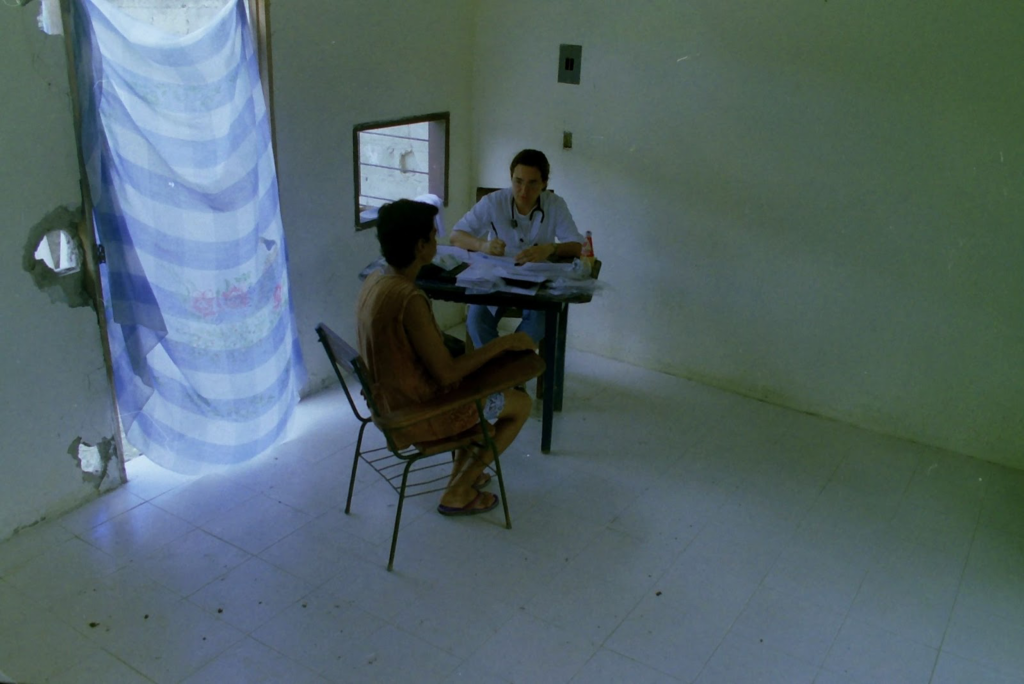
Key question for the Peace Courts: Can such crimes ever be forgiven? And should they?
It’s a question central to the current peace process, and instructive to any future ones. As Colombia’s cycles of conflict roll on, and today’s perpetrators – the direct descendants of the AUC and FARC – commit their own atrocities, they would be wise to heed the words of my Yorkshire granny: “Truth will out.”
But is it the whole truth? That’s a key question for the JEP during their public cross-examination of Mancuso this week.
The man himself has softened over the years, now resembling a Costeño Santa Claus with jowls and a white beard and seems at ease recounting his side of the story. But it’s not entirely clear what’s driving Mancuso. Legal benefits? Genuine contrition?
Or is he out for revenge on his former political masters?
Mancuso demobilised along with the AUC in 2006 but was suddenly extradited to a US jail two years later after his too-public comments on links between the AUC, the military, and the then Álvaro Uribe government.
The paramilitary peace process, started in 2004, mostly served to cut visible links between the AUC and political-military chiefs. That the para leaders might actually repent – and point the finger at their former puppet-masters – was never part of the deal. And who knows where the truth trail might lead since Colombia’s US backers were also in the know.
To everyone’s surprise – and anger from victims’ groups needing answers for the killed and disappeared in Colombia – the Uribe government spirited 14 AUC leaders to US jails on “drugs charges.” As if sending drugs to the US is so much more of a crime than killing thousands of Colombians…
But now Mancuso’s back, with a vengeance, and – maybe – naming names.
Of course, it’s not new that the AUC worked in lockstep with Colombia’s military and politicians. It’s the “who, what, where, when” that the JEP wants to hear. And how it might help victims. One of the key questions – literally – is, “Where are the bodies buried?”
What have we learned so far?
According to his testimony this week, the AUC backed various former presidential candidates (call it bet spreading) such as Horacio Serpa, Andrés Pastrana, and Álvaro Uribe. Furthermore, Uribe, said Mancuso, had orchestrated the removal of security guards from a local politician so the AUC could kill him.
Pastrana and Uribe hit back this week on Twitter. Pastrana labelled Mancuso a “cowardly killer.” Uribe also used the word coward and threatened legal action.
Further information from Mancuso – but again not completely new – was on the tight links between Colombia’s state intelligence service (DAS) and the AUC. The para chief described his own role as la bisagra – “the hinge” – between the state military and the paramilitaries.
Mancuso’s testimony also highlighted the close logistic support that the Colombian state military gave the AUC, in the form of weapons, transport, and monthly multi-million payments from drinks companies like Postobon and Bavaria.
He also said there was also tactical support from the Colombian military. The local army and marines were purposefully distracted to investigate “missing cows” by local rancher-politicians, even as the AUC raped and strangled women in El Salado. Then, when they were “alerted,” state forces held back for three days so the paramilitaries could finish the job.
These joint operations happened at a national level, admitted Mancuso: “Everywhere we operated, it was done in the same way,” he told the JEP magistrates. “Between all of us, we called each other ‘cousins’ because we were one family. We were allies in a fight against the internal enemy: the guerrillas.”
But this noble “band of brothers” narrative – united to fight an insurrection – wears thin when you consider the horrific AUC attacks against civilians and non-combatants, such as in El Salado. The list of victims is endless.
Killing a comedian
Under tutelage of DAS, the AUC murdered dozens of university lecturers and professors signalled as being “left-wing”, as well as the comedian Jaime Garzon, among many others. In fact, the DAS chiefs, as well as financially supporting the paramilitaries, would hand over intelligence files and “kill lists.”
“DAS handed over privileged information to the paramilitaries, which allowed them to persecute those they considered an obstacle to their military, social, economic, and political objectives,” Mancuso explained.
This policy led to hundreds of deaths of innocent persons whose work took them close to conflict areas, such as Mario Calderón and Elsa Alvarado who were gunned down with state complicity in their flat in Chapinero, Bogotá in 1997.
Both were NGO workers visiting the Sumapaz region south of Bogotá where guerrillas also roamed, and had been stopped by an army patrol – and their names and addresses taken – the week before their deaths.
And according to the former AUC chief this week, DAS had also declared Gustavo Petro and Álvaro Leyva (the current president and chancellor) as “military targets.”
“That inclination to the left labelled people as subversive,” explained Mancuso.
But politics wasn’t enough; this week Mancuso also recognised AUC involvement in the state military “falsos positivos” practices. He said paramilitaries would supply the army with the corpses of innocents that the Army passed off as guerrillas so troops could get bonuses.
“They handed us lists and then we hit houses and killed those who we later claimed to be guerrillas,” Mancuso said.
Two warnings – and one death
Eventually, the AUC spread their deadly nets to trap anyone perceived as a threat. This included the gruesome murders of state investigators, some from the CTI, Cuerpo Técnico de Investigaciones, sent to investigate paramilitary activities. We now know that some state technocrats tipped off the AUC to murder their own colleagues.
Then came Limpieza Social (social cleaning), an intersection of small-town conservatism, control by cocaine cartels, frustrated cattle ranchers and Catholicism. The AUC could kill you for your lifestyle.
Mancuso told this week how the paramilitaries targeted people because of their gender identity or for using drugs. Any non-conformist activity – such as young people’s tattoos and body art – was at risk, all part of the AUC strategy to exercise control over a cowed population.
Usually, people were warned twice before being killed once. This, at least in Monteria, was the AUC code, when I lived there in 2001: “You wear a belly button ring? Get out of town.” “Shave off your beard. Or get out of town. Or die.” Bought a nice Che Guevara T-shirt? “Leave or die.”
I once got “warned” for playing Led Zeppelin on my stereo. “We recommend not to play unapproved music” came a message via a colleague. Even salsa was frowned upon, and bars opted for non-stop accordion music even while the paramilitaries were harbouring fugitive vallenato legend Diomedes Díaz (he was accused of murdering his girlfriend).
The songs sung in Monteria this week were from the AUC’s victims. Along with poems, paintings and some video interludes, a small sample of the multitude of AUC victims were heard at the JEP – but only briefly as time was reserved mostly for Mancuso’s interrogation and testimony.
The final word, though, and perhaps the most impacting, came from Aura Camargo. Her video address to Mancuso (who looked sad and attentive during the presentation) went directly to the heart of conflict.
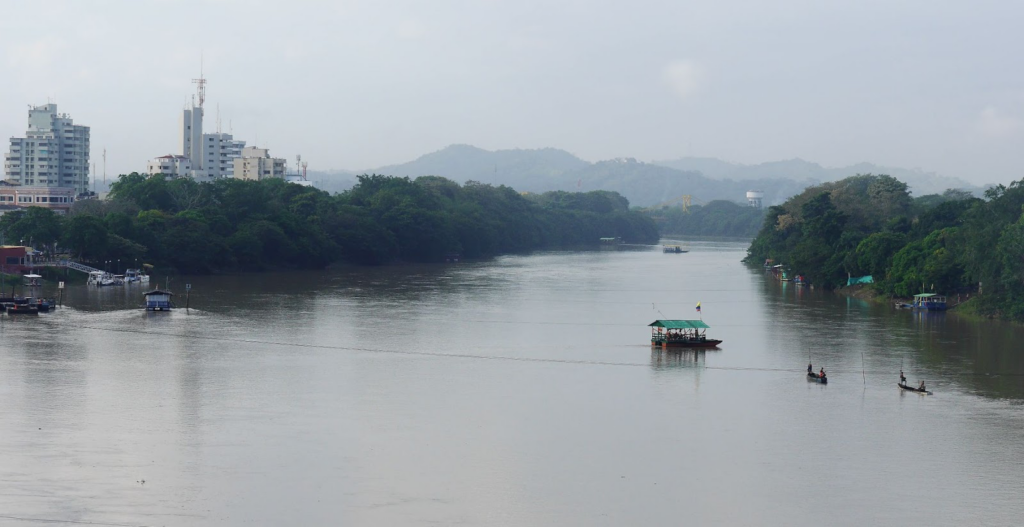
Who gave the orders?
More than the killings – Camargo lost several close family members – was the AUC’s destruction of the rich fabric of cultural, economic, and social life in the region; widespread rape and sexual abuse – Camargo herself was a victim – and the breakdown of family bonds.
“Mister Mancuso, what did we do to deserve this war which broke our communities?” she asked.
Now is the time, she said, to unmask the powerful political and business interests behind the land grabs and monoculture – and destruction of local agriculture – that underpinned the paramilitary project. A war nominally against insurgents by waged against the campo and the campesinos.
For Camargo, and many other victims, the twist in the tale is that their former nemesis, Salvatore Mancuso, is now their hope. But only if he is allowed to continue under the JEP and tell the full story. We should know within two months.
“There is no future without truth. We need to know who gave the orders?” said Camargo. Maybe, at last, Colombia will find out.


